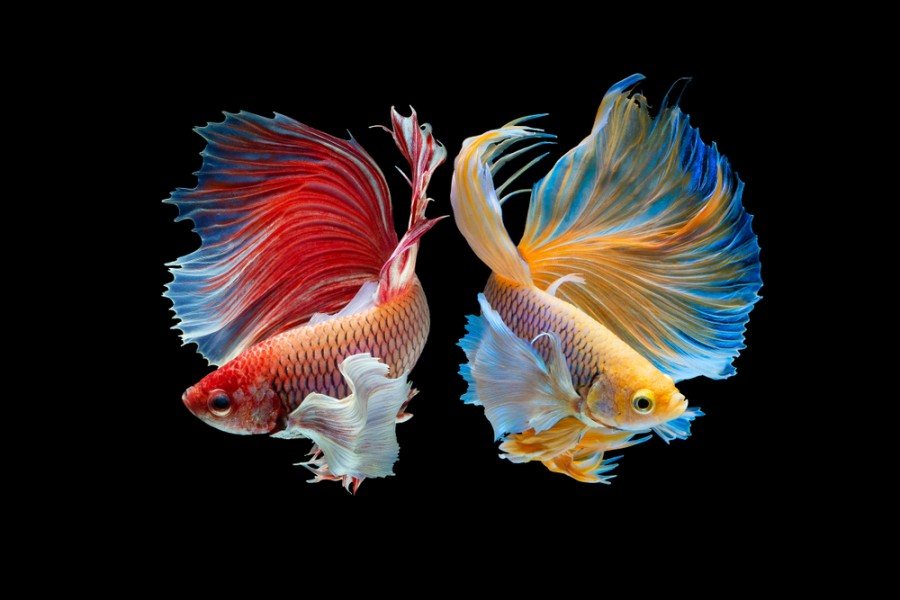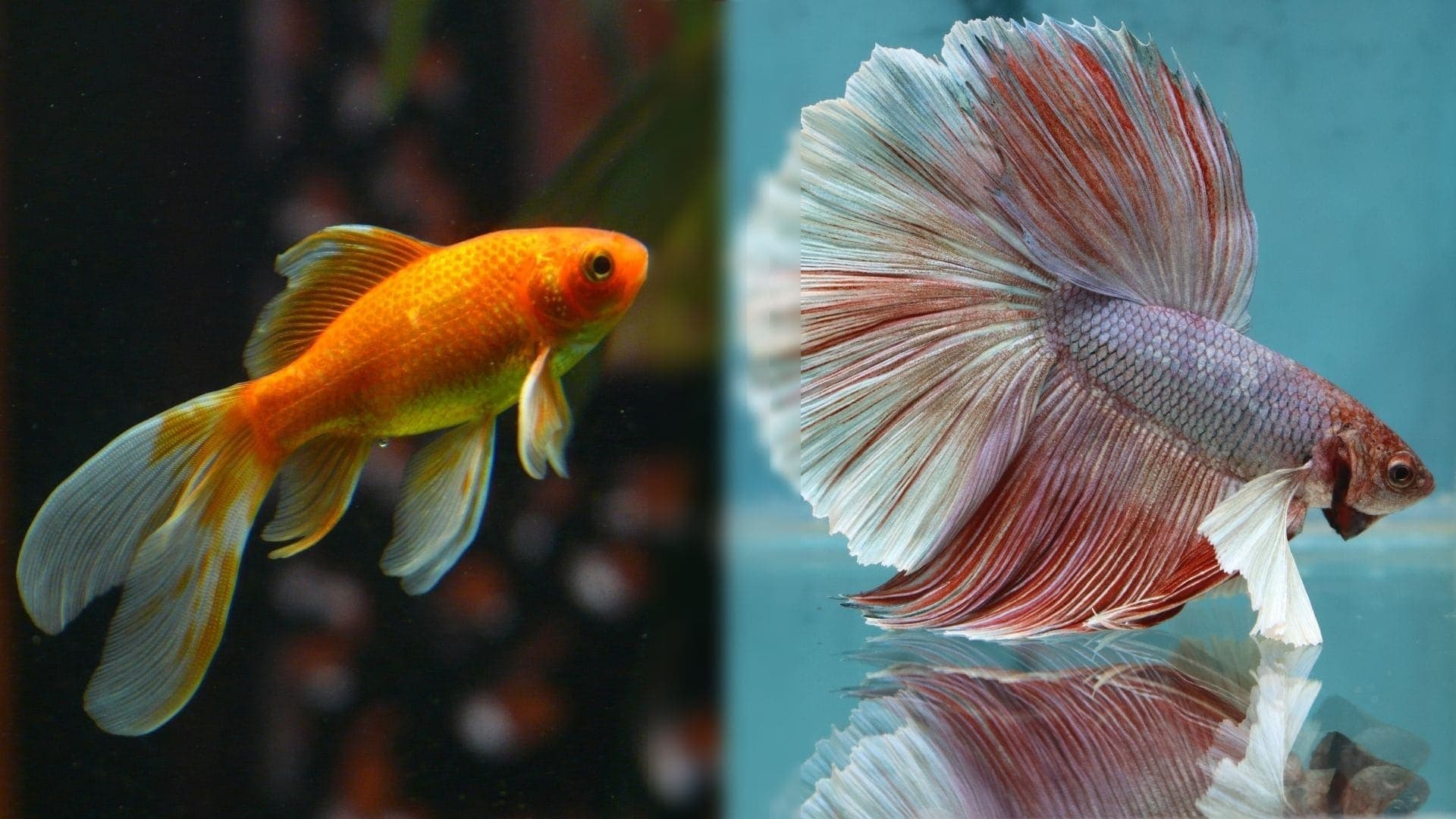6 Papillon Colors: Amazing Hues and Shades (With Pictures)

Updated on
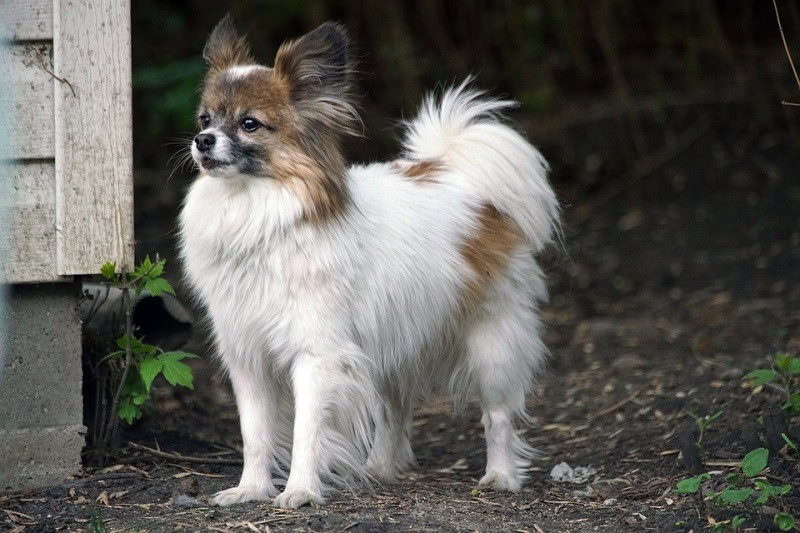
Papillons are known for their striking colors, energetic personalities, and those signature butterfly-like ears. However, one of their most fascinating aspects is their varied coat color patterns, each more beautiful than the last. Here, we explore six amazing Papillon colors you might not have known. Enjoy!
The 6 Papillon Colors
1. White and Black Papillon

The Black and White Papillon, as recognized by the AKC under the registration code 202, is a common and eye-catching color combination. The stark contrast of the black and white fur creates a dramatic effect that is simply irresistible.
Black markings usually adorn the ears, eyes, and body, providing a striking juxtaposition to the white base color. If you’re looking to adopt a Papillon, there’s a good chance you’ll find this plentiful color combination.
2. White and Lemon Papillon

Possessing a soft and sunny allure, the White and Lemon Papillon (AKC code 211) features a charming blend of white and light yellow or “lemon” patches.
The lemon spots are usually found on the ears and around the eyes, giving this breed a warm and engaging expression. The combination is less common than some others, making it an enchanting rarity.
3. White and Red Papillon

The White and Red Papillon is a feast for the eyes. The fiery red patches on a white base (AKC code 214) provide a bold and vibrant look, symbolizing the breed’s energetic nature.
The red markings usually frame the ears and eyes but can also appear on the body. The vivid color combination guarantees this Papillon will be the center of attention wherever it goes.
4. White and Sable Papillon
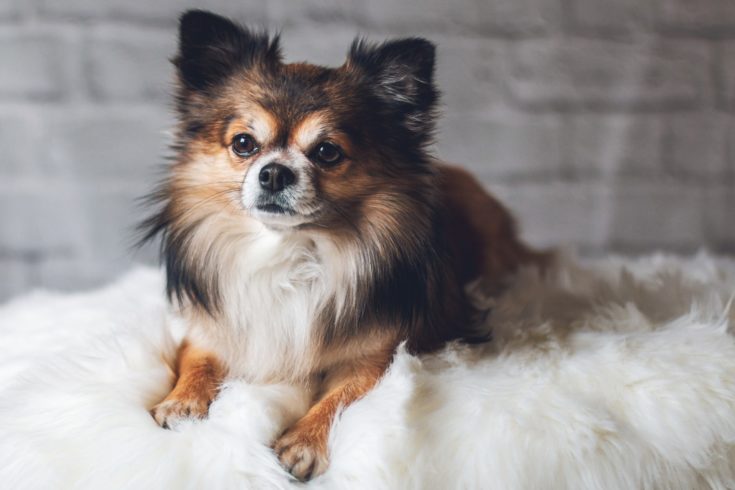
White and Sable Papillons, carrying the AKC code 215, are adorned with a sophisticated blend of white and brown fur. The sable patches, often dark at the roots and light at the tips, create a beautiful, layered look. This unique color gradient provides a touch of elegance to the Papillon’s lively nature.
5. White, Black, and Tan Papillon

The White, Black, and Tan Papillon (AKC code 219) is known for its tri-color coat. The combination of white, black, and tan markings is a visual spectacle, bringing depth and variety to the Papillon’s appearance.
Black usually covers most of the body, with tan markings above the eyes and around the ears. The white fur creates a sharp contrast to the darker shades, enhancing their appeal.
6. Unusual and Rare Papillon Colors
In addition to the standard colors recognized by the AKC, Papillons can sometimes exhibit unusual and rare color combinations. From blue and white to chocolate and white, these unique Papillons offer a delightful surprise.
Though these color patterns might not be as common, they are every bit as beautiful and captivating as their standard counterparts.
Tips to Care for Your Papillon
Papillons require specific care routines to keep them healthy and happy. If you’re the lucky owner of one of these beautiful creatures, the following tips will guide you in providing the best possible care for your Papillon.
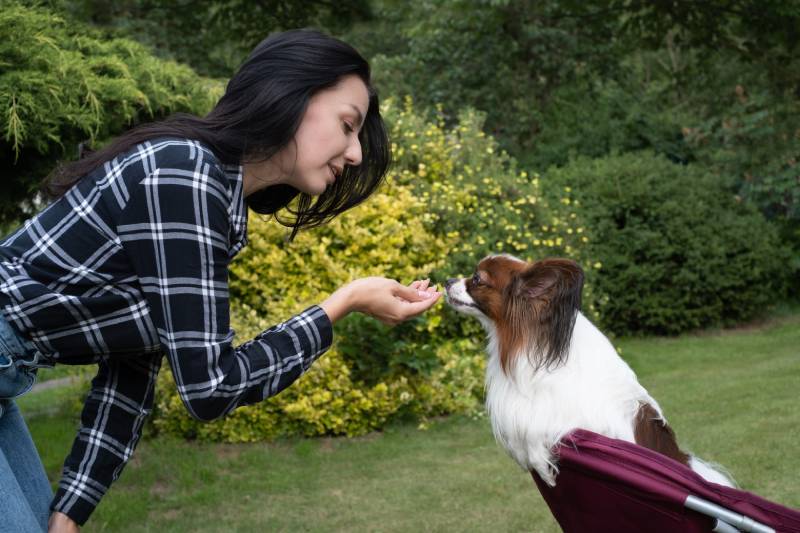
Proper Nutrition
Quality nutrition is key to maintaining your Papillon’s health. Choose a balanced, high-quality dog food that caters to their size, age, and activity level. Always ensure fresh water is readily available.
Regular Exercise
Papillons are an active breed, and they need regular exercise to keep them fit and healthy. Daily walks, play sessions, and mental stimulation like puzzle toys can keep your Papillon entertained.
Grooming
Papillons have a beautiful double-layered coat that requires regular grooming. Brush their fur at least once a week to keep it free from mats and tangles and to maintain its beautiful shine. Papillons are relatively clean dogs, and they only require baths every few months or when they get particularly dirty.

Dental Care
Papillons, like many small dog breeds, are prone to dental issues. Make sure to brush your dog’s teeth regularly and provide them with dental chews to maintain good oral health.
Regular Checkups
Regular vet checkups are important to ensure your Papillon remains in good health. Routine vaccinations, parasite control, and regular screenings for common breed-specific issues should be part of your dog’s health care plan.
Socialization and Training
Papillons are intelligent dogs and respond well to training. Early socialization and positive reinforcement training methods will help your Papillon become a well-behaved and sociable pet. Remember, they are sensitive dogs and harsh training methods should never be used.

Love and Attention
Last but not least, Papillons thrive on human companionship. They love to be part of family activities and enjoy the company of their humans. Make sure to give your Papillon plenty of love, affection, and attention.
Taking care of a Papillon requires commitment, but the love and companionship these dogs offer in return are worth every effort. By following these tips, you can ensure your Papillon stays healthy, happy, and vibrant—just like their beautiful coat colors!
Conclusion
The Papillon breed is as diverse in its color palette as it is in its charming personality traits. These dogs are truly a testament to the wonder of canine genetics. Whether they are black and white, lemon and white, or any other stunning combination, they never fail to impress with their distinctive appearance and spirited disposition.
Featured Image Credit: gayleenfroese2, Pixabay







